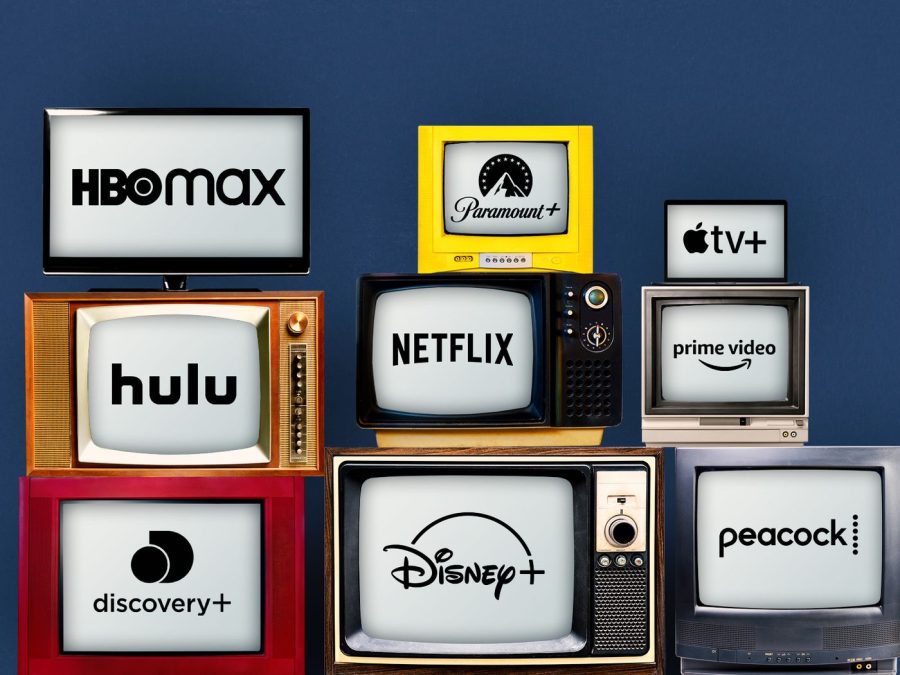Is Netflix’s recent subscriber loss the beginning of the downfall of streaming?
I recall one time my friend and I were watching TV at my house, and we decided to watch “Everybody Hates Chris” on Hulu. When I clicked it and an ad came up, she looked at me in bewilderment and asked why I had ads. I told her I had the student Spotify premium plan that comes with an ad supported Hulu plan, and Showtime, and I would rather have ads on Hulu. She then asked why I would keep ads on Hulu, and that I might as well watch cable. As someone who grew up watching cable television and liked it, I never understood why people didn’t like it. It wasn’t until streaming came along that I saw the potential in ad-free streaming; especially services that allow more creativity than a cable network. Although streaming has become a dominant figure in film and television, it has started to come down from its climax. Recently, Netflix has reported a loss of 200,000 subscribers in the first quarter of 2022, resulting in their stock plunging, and are expected to lose 2 million more subscribers. Netflix is now offering a cheaper, ad-supported plan as a result. With Netflix turning to ad-supported streaming, along with other services, what does that mean for the future of streaming?
To understand the future of streaming, we have to look at how streaming began. Before streaming services were the norm, Netflix and Hulu were the main players in the field. Netflix and Hulu would pay studios to license their TV shows and movies to stream on their platforms. This is how we were able to watch Marvel, Star Wars, DC, and a plethora of other shows and movies on one service. This was the standard model until one company started to change the media industry forever. In 2009 Disney acquired Marvel Studios and Lucasfilm in 2012, resulting in one of the biggest media monopolies. Then, in 2019, Disney Studios bought 21st Century Fox for $71.3 billion dollars, making it one of the biggest media mergers ever. With Disney acquiring so many intellectual properties (IP), in addition to their already well established library, they knew they could make their own streaming service and gain a lot of money from it; and they have since they are expected to begin turning a profit in fiscal 2024 according to the company’s quarterly earnings report. Many other channels and companies also saw the potential in taking back their IPs and creating their own services, thus spreading all the content we love across different platforms. But isn’t that just cable television?
The main appeal of streaming services when they first came out was that it was different and better than cable. Many people liked the idea of being able to watch what they wanted without ads. With the rise of popular television shows being available to binge all at once with no ads came the solution to many people’s problems with cable. However, with streaming services like Hulu, HBO Max, Peacock, and now Netflix adding ad-supported subscriptions, streaming is becoming the new cable. Streaming services still offer many things that cable doesn’t that differentiates it from that model. Although cable television still airs great shows like “Better Call Saul,” “Abbott Elementary,” and “Atlanta,” creators still have to follow heavy restrictions whereas creators that work with streaming platforms tend to have more creative freedom and bigger budgets than creators who make network television. According to The Wall Street Journal, Netflix spent $30 million on each episode of Stranger Things’s upcoming season 4, which is much more than the average cable show costs. Streaming services also have a plethora of options to choose from so that you always have something to watch, on the other hand with cable you are forced to watch whatever programming they have on. However, to be able to enjoy these services ad free, you have to pay a fee that’s not always feasible.
Even though streaming platforms still have an edge over cable, the line separating the two becomes thinner and thinner as time goes on. However, it is not only the ads that are blurring the lines between cable and streaming. The main issue is the fact that different companies and studios are creating their own streaming services, making it harder to house everything in one spot. A part of streaming services’ downfall is that the market is oversaturated with them. As of right now there are almost 50 streaming services available in North America, and many of our favorite shows and movies are spread out across these platforms. Before, if I wanted to watch one of my favorite comedy shows, I could head to Netflix because they had shows such as “Friends,” “The Office,” “Parks and Recreation,” “Brooklyn Nine-Nine,” and “It’s Always Sunny in Philadelphia.” Now, “Friends” is on HBO Max, “The Office” and “Parks and Recreation” are on Peacock, and “Brooklyn Nine-Nine” and “It’s Always Sunny in Philadelphia” are on Hulu. Since more studios and companies are taking back the rights to their content to create their own platform, you have to pay for different services in order to access all the content you want. The cost of multiple streaming services is about on par to the cost of cable, not making it any more cost effective. The new model of how we watch TV on streaming is starting to change as well. Netflix can be credited for starting the binge-watching model we all have been accustomed to recently. Before, we would all binge watch the latest season of “Stranger Things” in a day, but now with Disney+ and HBO Max, releasing their shows week by week, people tend to stay engaged longer and the popularity of their shows grows as the show premieres.
So does this mean the end of Netflix, and by extension streaming services? Not at all. Streaming is here to stay for the foreseeable future, due to their popularity and wide access to TV shows and movies we want to see. Disney+ is still seeing massive success due to their collection of Marvel, Star Wars, and Pixar content. Even though it doesn’t look like they are going anywhere, they will have to start implementing changes to their model and fees if they plan on keeping the subscribers they still have. Not evolving to keep up with their audience will result in the steady decline of the streaming model, and to ensure that won’t happen, they will have to listen and adapt accordingly. Although many are complaining about Netflix’s tendency to cancel shows and then increase their price right after, many still prefer Netflix and streaming over cable TV. While Netflix still arguably remains top of the game, if they don’t acclimate to this new playing field, it will only be a matter of time before they get left behind.
Image courtesy of Vox
Essay: The Future of Streaming Services
May 22, 2022
3
0
About the Contributor
Kamiah Johnson, A&E Co-Editor
More to Discover









Rizwan Khan • Aug 30, 2023 at 1:45 am
The paradigm of the entertainment realm has undergone a profound metamorphosis with the ascension of streaming platforms, effecting a revolutionary shift in the consumption of media. Casting our gaze into the future, the assimilation of video and Over-The-Top (OTT) media governance systems is poised to assume a pivotal role. These sophisticated frameworks efficaciously streamline the arrangement, dispersion, and accessibility of content, thereby augmenting user engagements and abetting content originators in their quest to reach expansive audiences.
Robert H. Moore • Jul 24, 2022 at 6:45 am
I want say thanks to spread good detail like this. With the help of this platform author informing about the stadium yoi kita. Many people who’s interest in sports always searching for this type of articles. This become popular not only this but also online homework solutions are in high demand I have good view for soiebiologique.com I had hire this service for my kids. They always praise about the teaching mathods of this team. Anyone can use this without fear.